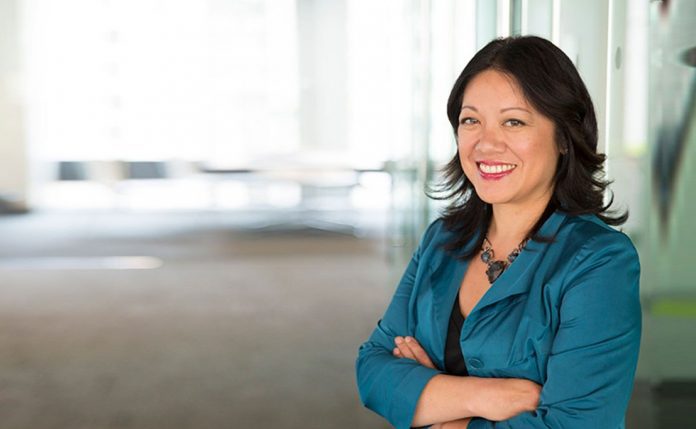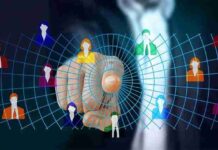
An exclusive conversation with Charlene Li, Author, Expert –Digital Transformation, and Board Member
For the past two decades, Charlene Li has been helping people see the future. She’s an expert on digital transformation, leadership, customer experience, and the future of work. She’s the author of six books, including the New York Times bestseller, Open Leadership, and co-author of the critically acclaimed book, Groundswell. Her latest book is the bestseller The Disruption Mindset. She is the Founder and Senior Fellow at Altimeter, a disruptive analyst firm acquired in 2015 by Prophet. Named one of the most creative people in business by Fast Company, Charlene is a graduate of Harvard College and Harvard Business School.
Q- Tell us about your latest research and book “The Disruption Mindset”?
I’ve been an analyst since 1999 and have had the privilege of covering topics ranging from Internet advertising and portals to the rise of artificial intelligence and quantum computing. Throughout all of this, my work has consisted of helping leaders and organizations make sense of new technologies and see the opportunities in the disruption. I’ve made it my mission to help leaders thrive with disruption.
A few years ago, an executive asked me a good question, saying, “So, how exactly do you thrive with disruption?” He wanted to know what it was that the most disruptive organizations and leaders do to seemingly shift from one disruption to the next with ease. I didn’t know the answer so I started researching the topic! The result is the book “The Disruption Mindset”.
I found that disruptive organizations think about disruption in a different way. They don’t look for disruptive technologies to drive growth. Instead, they focus on driving exponential growth and take a disruption mindset approach to three elements: Strategy, Leadership, and Culture. The one thing that they all did was to center their strategy on meeting the needs of future customers. They understood that leadership needed to create a movement to align people around those future customers, and they intentionally created culture capable of thriving with flux and disruption.
Q- What are the workplace disruptions due to COVID-19 and how can HR leaders respond to it?
The top priority for HR leaders is the safety and wellbeing of employees, contractors, and supply chain partners. Until that is addressed, nothing else matters because nothing can move forward until safety and security are established. This is about more than supplying adequate PPE and work from home (WFH) guidelines. It requires constant communication and collaboration, providing updates, and encouraging feedback and dialog against the backdrop of constantly changing circumstances. It means that especially during these uncertain times that HR leaders must have empathy for their employees and provide flexibility and options.
For organizations with substantial WFH employees, HR leaders must recognize that office work is fundamentally changed, especially for organizations with little or no provisions for WFH. Now that it’s been proven that WFH can actually work, it will be difficult to require employees to work in the office, especially as social distancing is likely to prolong the return back to “normal” office routines.
HR should focus their efforts on optimizing for distributed work rather than the default of in-office work. The reality is that some part of your workforce will always be “remote” from the office, because of travel, illness, or choice. This means thinking “remote first” when setting up processes and routines so that everyone has access to the same information, decision-making updates, and cultural rituals so that geography and location become irrelevant to getting work done.
What it comes down to is that HR leaders will be at the forefront of establishing and sustaining trust with employees. That trust will be essential if organizations are to not just survive but thrive in the midst of uncertainty.
Q- How to ensure business continuity and employee productivity when teams are working remotely?
Based on my research on how fully remote teams operate, here are a few best practices on how to ensure that distributed teams stay focused and productive.
- Be very clear on goals and objectives and focus on results, not hours. You’ll be creating accountability by creating transparency about who is doing what by when — and it will be obvious when objectives are not being met.
- Reduce the use of scheduled meetings and substitute the use of collaborative platforms to asynchronously provide daily updates and coordinate work. Again, by making updates visible to everyone, it ensures that everyone stays coordinated and creates accountability on a more frequent basis.
- Define time boundaries for work. When WFH, it’s easy to lose track of time and have work seep into private time. Be clear when people are expected to respond to requests and also when people are not required to respond. Leaving this undefined can create misunderstandings and stress between colleagues.
- Use the same tools. It’s tempting to use this time to try out many of the new and different tools out there! And while there’s a place for experimentation, your organization’s operational foundation is not one of them! For each function, select one tool that everyone uses. That means the same video conferencing, messaging, document sharing, collaboration platform, and project management tools. Then make sure that it’s clear when and how each platform is going to be used to support work getting done. There’s nothing worse than trying to figure out the best way to reach someone when there are multiple platforms being used.
- Write everything down and share it. This is probably the most important practice of remote teams. When you share or decide something in-person, in a Zoom meeting, or in an email chain, you realize that you ended to share it as soon as possible with the rest of the team so that they are informed. This needs to happen consistently, even with the smallest bits of shared information or decisions made. Otherwise, it becomes impossible to ensure that all of the information needed for people to do their jobs is readily available to someone, regardless of location.
Q- How will COVID-19 change the future of work?
COVID-19’s lasting impact will be that social distancing made us much more aware of how important and fragile relationships are. The future of work will be defined by how our relationships shift and evolve and in most cases, for the better.
Take for example how the crisis has revealed the true character of our leaders. The good ones have risen to the challenge and invested in culture and communications to build trust with colleagues while leaders who struggle will be filtered out. The result is that these good leaders will invest in the physical and emotional well-being of team members.
Remote work during this crisis has increased our empathy for the challenges we all face managing work/family/life. The result will be greater flexibility and accommodation for different work arrangements, hours, and locations. The loosening of the traditional definition of what constitutes “work” will also result in greater diversity as we make accommodations to ensure that we are inclusive of people with different physical, social, and mental capabilities.
Lastly, the crisis has forced organizations to focus on what is most important, jettisoning bureaucratic processes and organizational structures in order to increase speed and flexibility. There’s a growing sense of agency among employees who see themselves as co-owners contributing in meaningful ways to success. Innovation will be the responsibility of every team member as our organizations redefine themselves in a post-COVID world.
Q- How the New Norm Workplace will look like after the Coronavirus Pandemic?
The biggest difference is that we will no longer define our “workplace” as a physical location. It will be one that is defined by the relationships between the people in that workplace and measured by the level of trust and belonging they experience.
To create trust and belonging, the New Norm will be far less hierarchical and far more open in how information is shared and how decisions are made. There will be a much stronger focus on leadership and culture, with people united in a shared sense of purpose. And we will all be much more comfortable and adept at using technology to connect and sustain these relationships over time and across distances.
Q- How to prepare organizations for the Digital Workplace?
Our research has found that the biggest barrier to the digital workplace isn’t an issue of having the “right” tools, but rather, training on how to use the tools in a consistent way across the entire organization. The best way to prepare is to require that all-important workflows are done on digital platforms. When leaders show up and work digitally, they signal that digital is how work is going to get done going forward. And if your leaders and executives are the digital laggards, make sure that their top three priorities are supported by digital platforms so that they can see how working digitally helps move their top initiatives forward faster and better. The other catalyst to use is to hire digitally-savvy leaders who can infuse the organization with digital DNA. They can set the bar high for other leaders to emulate.
Q- Any concluding remarks?
In a time of crisis, it’s tempting to retreat from the edge and seek shelter, hoping that you won’t get too damaged by the storm. While it may feel safer, it isn’t because you are staying still while everyone else is moving forward. Now is the time to move out of your comfort zone and actively find opportunities created by this disruption. Now is the time, while things are already up in the air, to make the changes needed to execute on your ideal “new workplace”.
Thank you, Charlene Li!








